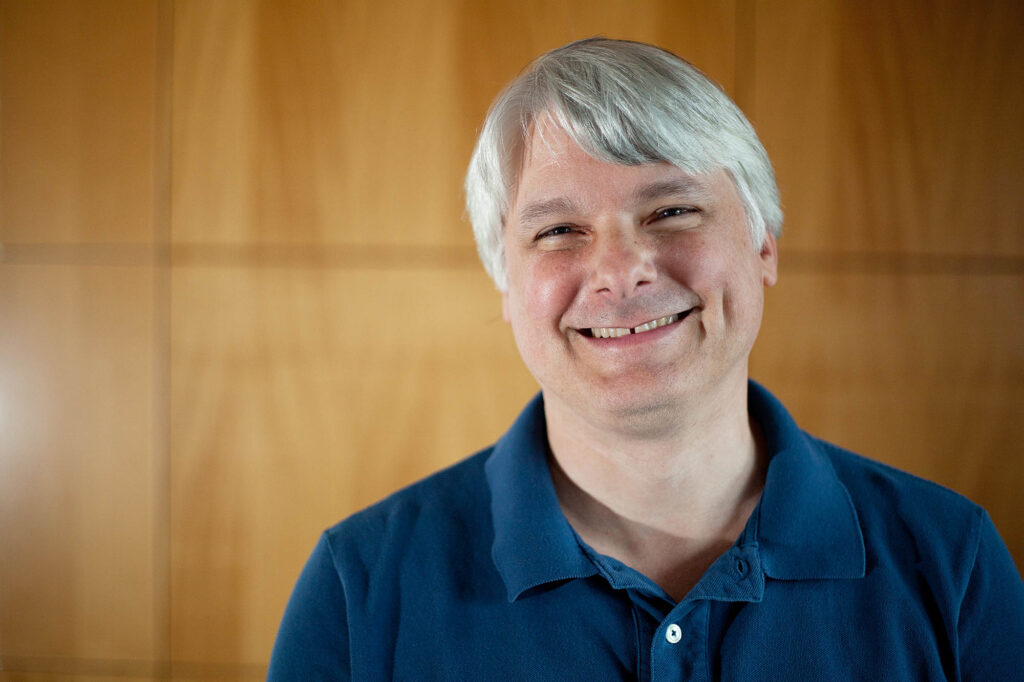Leland Pierce receives the Jon R. and Beverly S. Holt Award for Excellence in Teaching

Dr. Leland Pierce received the Jon R. and Beverly S. Holt Award for Excellence in Teaching from the College of Engineering for his remarkable contributions to Electrical Engineering Systems Design I (EECS 200), combined with his devotion to student learning.
“The task undertaken by Dr. Pierce in support of EECS 200—namely to transform the lab into a quasi-real simulator—was nothing short of heroic, in both effort and dedication to teaching,” said Fawwaz Ulaby, the Emmett Leith Distinguished University Professor Emeritus of EECS.
Dr. Pierce has been a research scientist with the department since 1992; his area of expertise is image processing techniques for radar remote sensing. While frequently serving as an instructor for individual multidisciplinary projects involving undergraduate students, he was first called to service as a lecturer in 2016 for one of the core introductory courses in engineering for first year students. He also managed the lab and discussion sections for the introductory circuits course for non-EECS majors. However, his primary contribution to the department as an instructor came with the newly-developed course, Electrical Engineering Systems Design I (EECS 200).
Dr. Pierce developed the labs for EECS 200 the first year it was taught in 2019, and later taught the entire course. EECS 200 is the first of two required courses in electrical engineering focusing on engineering design. It uses a 2-wheeled robot platform with a societally-relevant challenge.
Just one year later, however, COVID-19 hit, and a course that had a specific focus on hands-on learning in the lab had to be completely reimagined. Dr. Pierce accepted the challenge, and spent months developing software that would closely mimic being in a lab environment.
Thanks to his creative problem-solving, everything students did in the lab, such as grabbing wires to connect the breadboard socket to the breadboard banana socket, and cables to connect the breadboard to the power supply, or grabbing a motor – were translated into a virtual setting. The virtual lab also mimicked sensors, Arduinos, cameras, and included a ruler to measure distance.
As restrictions put in place due to the pandemic began to ease so that students could return to the lab, they had the option of using the virtual setup or coming into the lab, depending on their comfort level, and health. The course has now returned to being completely in-person.
Students who have taken the course have praised Dr. Pierce’s interactive teaching style, and his comprehensive explanations of the material that would continue in his office hours. He was praised for making even the most complex subjects engaging and comprehensible for students.Dr. Pierce has also taught some of the core courses in electrical and computer engineering: Introduction to Electronic Circuits (EECS 215), Electromagnetics I (EECS 230), and the major design experience course, Wireless Link Design (EECS 430). He is able to augment his teaching with the experience he brings as a researcher and leader in the professional community. For example, he has served as Chair of the local IEEE Remote Sensing chapter, and advisor to the IEEE Remote Sensing Student Chapter. His efforts as advisor were recognized with the Outstanding Student Organization Advisor Award. He is also an advisor to the student chapter of Tau Beta Pi.
 MENU
MENU 
